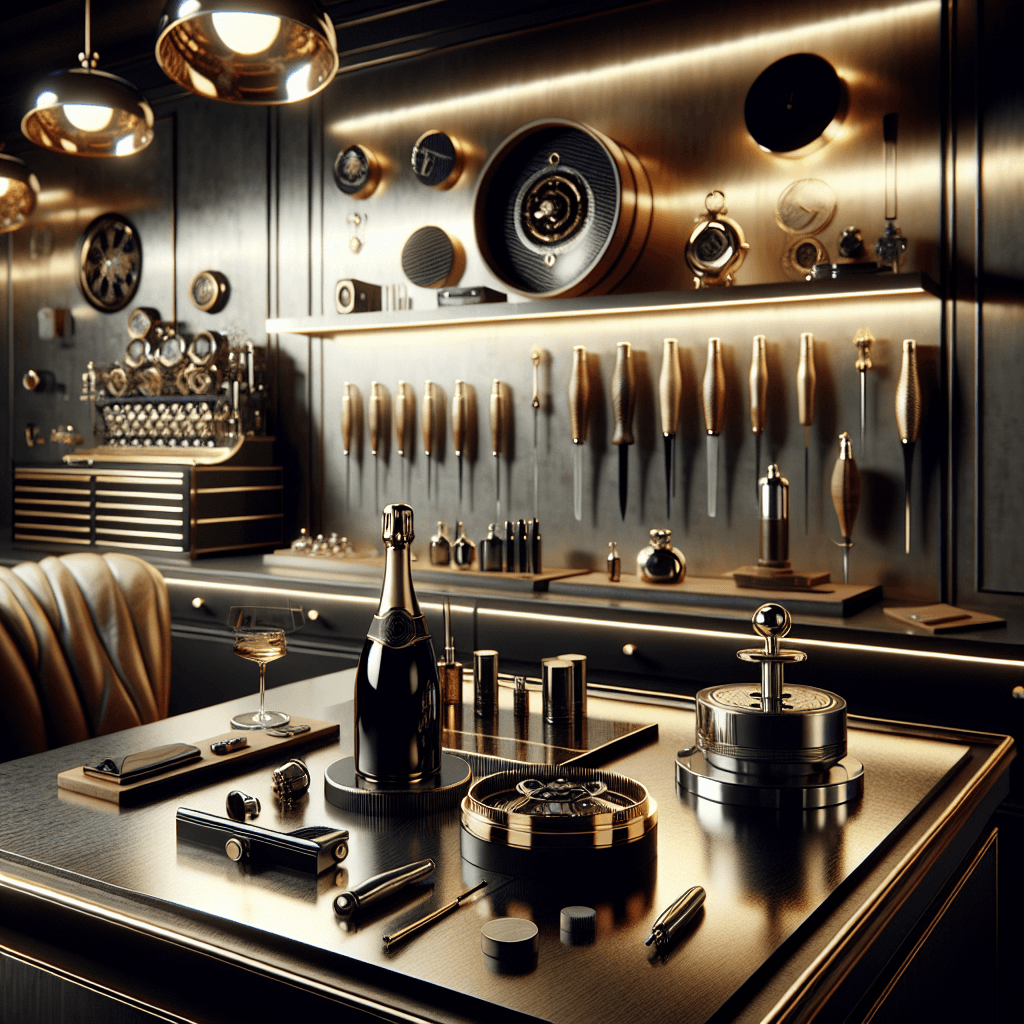Why Fine Champagne is Becoming a Serious Financial Asset
The allure of fine Champagne has transcended mere celebration, positioning itself as a symbol of luxury and a burgeoning asset in the portfolios of discerning collectors and luxury investors.
- The Rich Heritage of Champagne
- Understanding the Investment Landscape of Fine Champagne
- Notable Champagnes and Their Historical Significance
- Insights into Collecting and Storing Champagne
- The Cultural Impact of Champagne as a Luxury Asset
- Future Prospects for Champagne Collectors
The Rich Heritage of Champagne
The region of Champagne, with its rolling hills and historic vineyards located in the northeastern part of France, is not just a geographical designation but a mark of unparalleled quality. The method of producing Champagne, known as méthode champenoise, involves a complex and labor-intensive process that has been refined since the 17th century. This heritage is not only a testament to the region’s dedication to quality but also to its cultural and historical significance, which adds layers of value to each bottle produced.
Champagne’s exclusivity is protected by strict regulations that govern everything from grape cultivation to labeling, ensuring that only sparkling wines from this region can rightfully claim the title of Champagne. This exclusivity has helped maintain the beverage’s status as a symbol of luxury and celebration across the globe.
Understanding the Investment Landscape of Fine Champagne
Investing in fine Champagne is becoming increasingly popular among luxury investors who appreciate not only the taste but also the potential for appreciation in value. Unlike other investments, the value of fine Champagne can increase with age, and limited-edition bottles or those from particularly good vintages can become highly sought after.
Several factors contribute to the investment worthiness of Champagne, including rarity, brand prestige, vintage quality, and storage conditions. For instance, bottles from renowned houses like Dom Pérignon or Krug, especially those from exceptional vintage years, are highly prized for their aging potential and historical value.
Notable Champagnes and Their Historical Significance
Certain Champagnes have risen to iconic status, not just for their taste but for their impact on the history of wine. For example, the 1928 Krug is revered not only for its exquisite flavor profile but also for its storied past, having been served at significant historical events. Similarly, Louis Roederer’s Cristal, originally created for Tsar Alexander II of Russia, is another example of Champagne intertwined with history, adding layers of narrative value that captivate collectors and connoisseurs alike.
These storied bottles are often the highlights of auctions and can fetch astronomical prices, underscoring their status as alternative assets rather than mere consumables.
Insights into Collecting and Storing Champagne
Collecting Champagne involves more than purchasing bottles; it requires knowledge and passion for proper storage and preservation. The conditions under which Champagne is stored can significantly impact its quality and, by extension, its value as an asset. Ideal storage conditions include constant temperature, appropriate humidity levels, and minimal light exposure.
Moreover, the provenance of the Champagne, or its history of ownership, can also play a crucial role in its value. Collectors often seek bottles with well-documented histories, which provide authenticity and ensure the Champagne’s quality has been preserved through careful handling.
The Cultural Impact of Champagne as a Luxury Asset
Champagne’s status as a luxury asset is reinforced by its cultural significance. It is often associated with celebration, success, and exclusivity, which enhances its appeal as an investment. The beverage’s cultural cachet is evident in its presence at major events, from film festival toasts to state dinners, where it symbolizes refinement and celebration.
This cultural impact extends beyond consumption; it influences fashion, art, and design, further embedding Champagne in the luxury market. For instance, designers and artists frequently collaborate with Champagne houses to create limited-edition bottles that become collectible art pieces.
Future Prospects for Champagne Collectors
The future looks promising for collectors of fine Champagne. As global appreciation for this unique beverage grows, driven by both emerging markets and traditional consumers, the demand for rare and vintage Champagnes is likely to increase. This trend is supported by the growing interest in alternative investments and the cultural prestige associated with Champagne.
As collectors and investors continue to recognize the intrinsic and appreciative value of fine Champagne, it stands poised to remain a significant and cherished component of luxury investors.
For further reading on the heritage and craftsmanship of Champagne, explore authoritative sources such as the official Champagne region website or luxury publications that delve into the nuances of this exquisite beverage.



